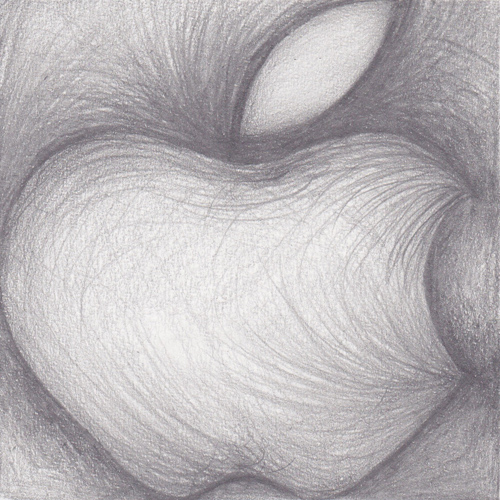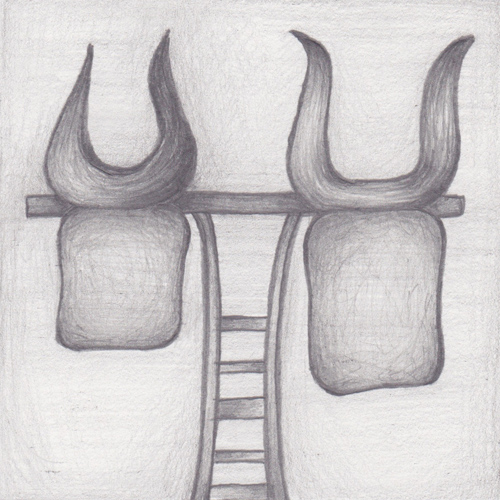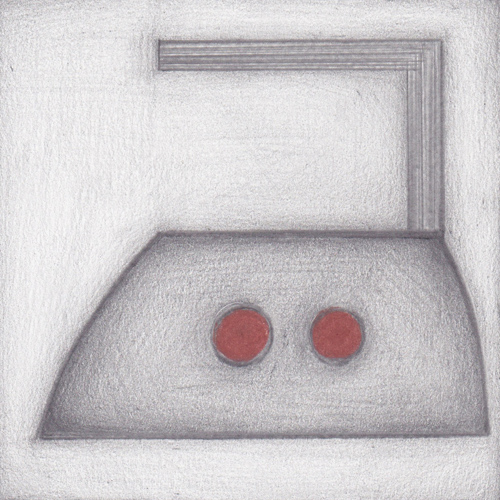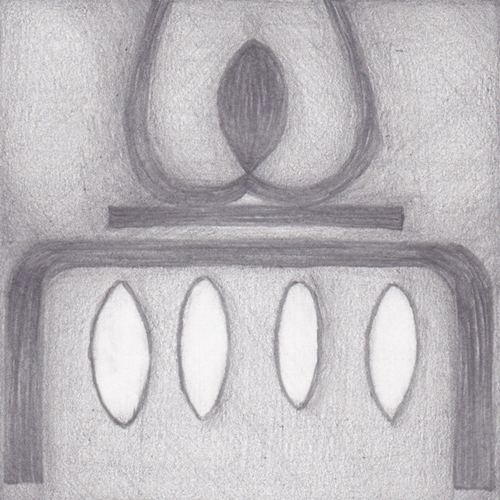As previously explained in the “concept” section, the book is composed of slabs/pages displaying various symbols. This contemporary “Rosetta stones” equalise, by a formal point of view, disparate images that have been collected into the melting pot of the human imagination during a time span ranging from the prehistoric era up till the present day.
The estranging effect produced by the simultaneous vision of so many symbols belonging to times and thematic areas so distant from one other triggers a reflexion on the symbolisation processes and the various ways in which throughout history the referential image (as could be, for instance, a realistically depicted chair) transformed into the symbolic one.
In order to clarify this point I will give some examples.
In Ancient Egypt the hieroglyphical symbols formation process went through a sequence of several different phases.
In a first phase the representations were mimetic (for example, an eagle was realistically depicted as one), but over the course of time they became more and more abstract and spare, as in the latest hieroglyphics that we know of.
In this very same way the commercial logos succinctly summarise all the several transformations that led to them: they contain in their own compact design the figuration and abstraction processes that generated them, in addition to embodying into a visual and concise form the philosophy of the brand they stand for.
My own research does not aspire to being rigorous by a historical or philological point of view, but nevertheless it aims to bridge the time span that separates us from our past, in order to illustrate how this past is well and alive all around us, even in the most advanced and futuristic settings.
Among the many symbols I worked on, something more has to be said be said about the ones describing instructions for handling, mounting or using spaces or devices.
In our globalised society the frequent exchange of services and merchandises has fully exposed the difficulty of making verbal communication possible across so many different languages.
As an example, when a jumper made in China is bought in Sweden reading the label may become a problem, to solve which comprehensive symbol charts have been devised in which a considerable amount of information is conveyed by a comparably small amount of space and signs (since symbols are indeed “condensifiers” of meaning).
Within this example, one can think of the “dry cleaning” symbol for instance, or the “don´t bleach” symbol.
Other useful examples are the charts used for the handling of machines and other devices, or yet, the symbols referring to electric power resistors and transformers that are in use within and without electrical plants.
A few preparatory drawings for the symbols appearing on the slabs can be seen in the pictures below.
Tatiana Villani
English translation by Lola Savino (http://lolasavino-katatronix.tumblr.com) |






